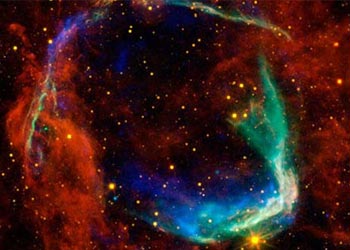November 4, 2012
Sydney: Two super-luminous supernovas, 10 to 100 times brighter than others of their type, have been detected in the distant universe.

Dazzling Twin Supernovas
The discovery, led by Swinburne University of Technology astrophysicist Jeffrey Cooke, sets a record for the most distant supernova yet detected.
November 4, 2012
Sydney: Two super-luminous supernovas, 10 to 100 times brighter than others of their type, have been detected in the distant universe.

Dazzling Twin Supernovas
The discovery, led by Swinburne University of Technology astrophysicist Jeffrey Cooke, sets a record for the most distant supernova yet detected.
Such supernovae were first discovered only a few years ago and are extremely rare in the nearby Universe.
"The light of these supernovae contains detailed information about the infancy of the Universe, at a time when some of the first stars are still condensing out of the hydrogen and helium formed by the Big Bang," Cooke was quoted in the journal Nature.
The origins of super-luminous supernovae are not well understood, but a small subset of them are thought to occur when extremely massive stars, 150 to 250 times more massive than our Sun, undergo a nuclear explosion triggered by the conversion of photons into electron-positron pairs.
This process is completely different compared to all other types of supernovae.
Such events are expected to have occurred more frequently in the early Universe, when massive stars were more common, according to a Swinburne statement.
The expected frequency and the extreme brightness of these events encouraged Cooke and colleagues to search for super-luminous supernovae at redshifts greater than 2, which corresponds to more than 10 billion years ago when the Universe was less than one-quarter of its present age.
"Our programme uses a novel image-stacking technique and monitors tens of thousands of infant galaxies targeted because they are rapidly forming stars, which increased our chances of detecting the supernovae," Cooke said.
Using the giant Keck telescope in Hawaii, researchers searched through a large volume of the early universe and found two super-luminous supernovae, at redshifts 2.05 and 3.90 – breaking the previous 'normal' supernova redshift record of 2.36.
Courtesy: IANS
















































































































